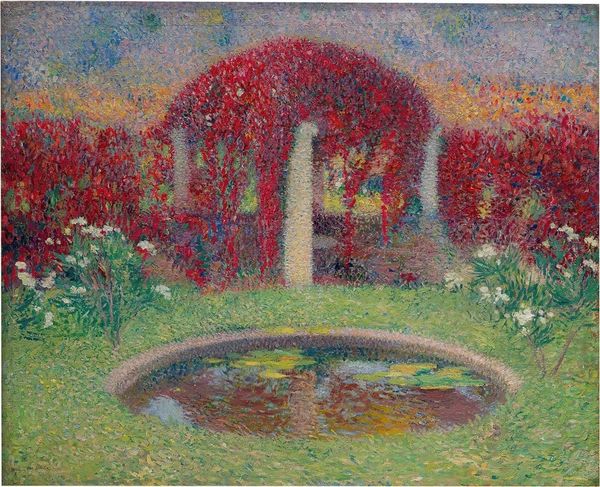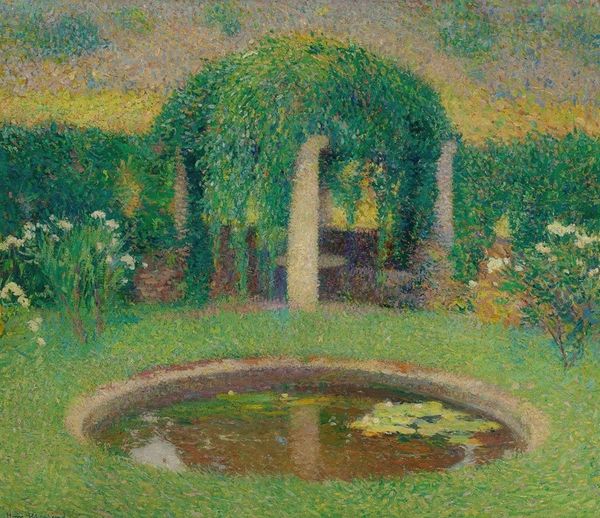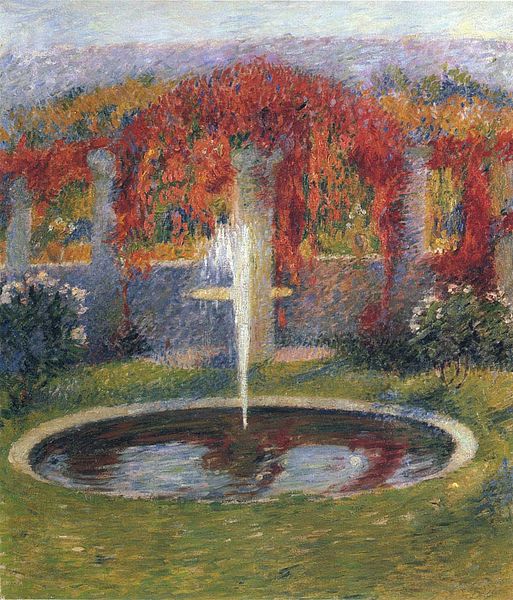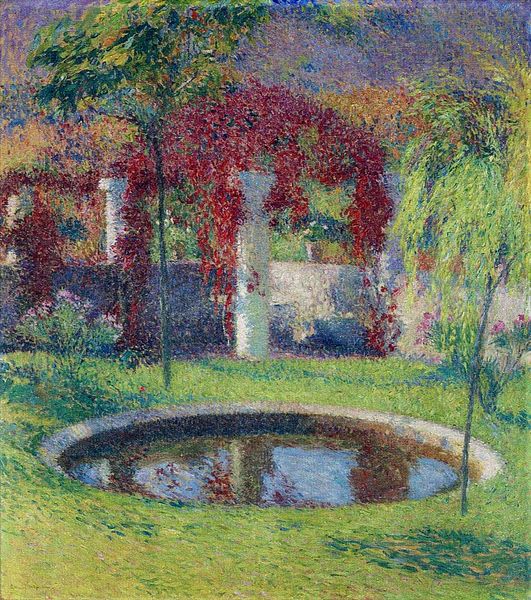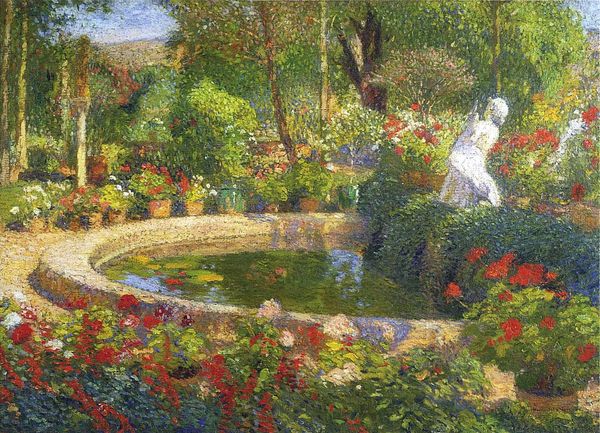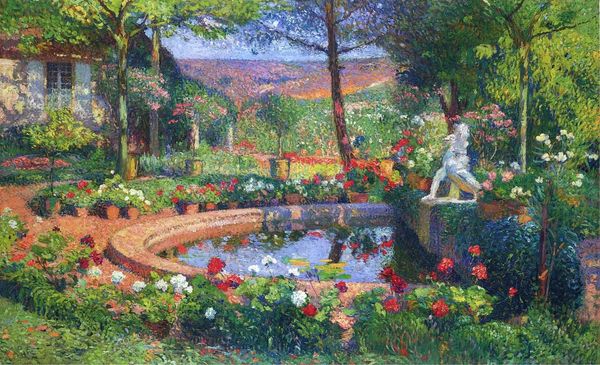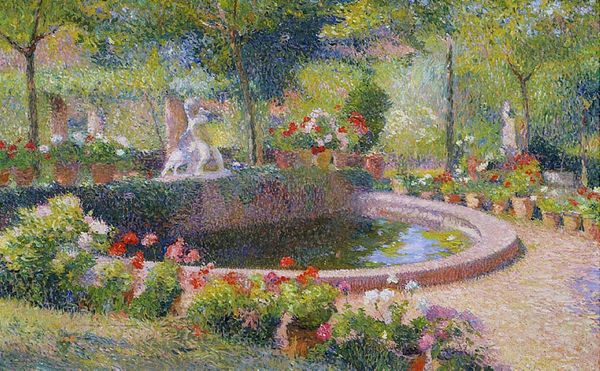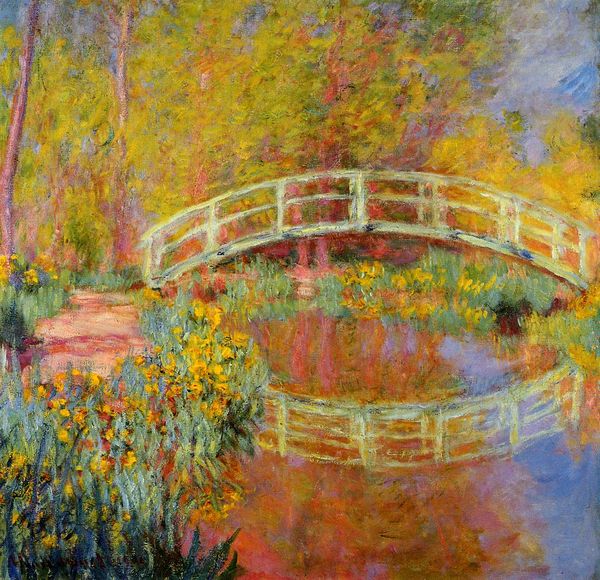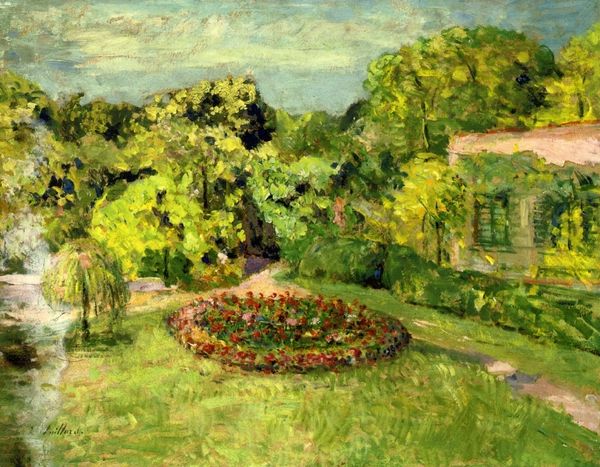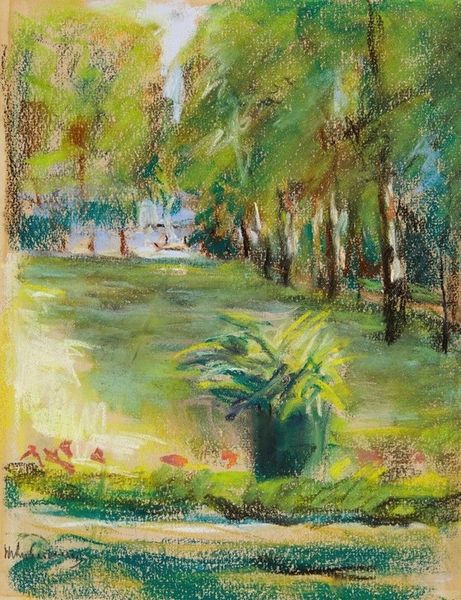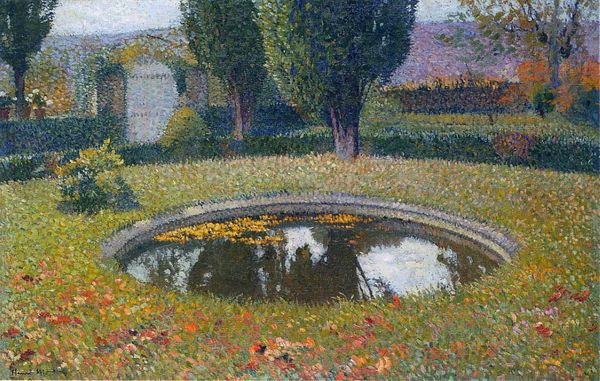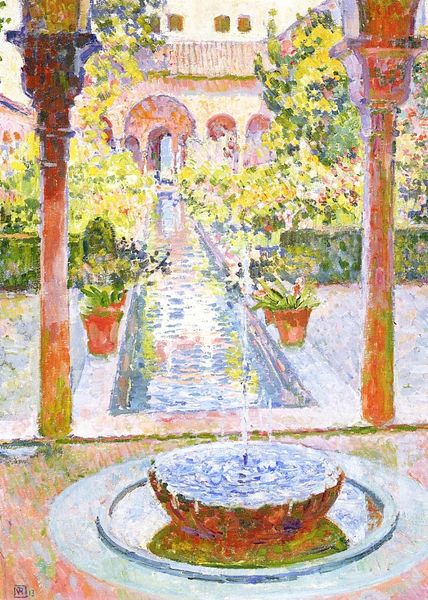
Copyright: Public Domain: Artvee
Editor: This is Henri Lebasque’s "Le Jardin Fleuri," painted around 1914-1915. The light, the vibrant colors... it’s so cheerful. What strikes you most about this piece? Curator: I'm drawn to the subtle tension embedded within this idyllic scene. While visually harmonious, "Le Jardin Fleuri" was painted on the cusp of immense social upheaval – World War I. Doesn't the presence of the mother and child, rendered in such soft, impressionistic strokes, create a quiet intimacy, even vulnerability? Editor: Yes, I see that. It's like a protected world. Curator: Exactly. Lebasque's impressionistic technique, particularly his use of color and light, reinforces this sense of fleeting beauty. Yet, can we ignore that these paintings are inherently about leisure and privilege? Consider the socio-economic realities of the time. Who had access to these gardens? Whose labor maintained them? Editor: So you're saying the painting, even with its beauty, points to broader issues of class and access? Curator: Precisely. The pleasure we derive from viewing this idyllic scene becomes more complex when viewed through a critical lens. Can we appreciate its aesthetic qualities while remaining cognizant of its social context and the inherent power dynamics it subtly reflects? Editor: I never considered that! I guess it shows how important it is to look at art beyond just what's on the surface. Curator: It’s a valuable lesson, seeing art as part of a larger, often complicated, history. Every brushstroke carries more than just color.
Comments
No comments
Be the first to comment and join the conversation on the ultimate creative platform.
